
French Bulldogs are a popular breed known for their friendly and affectionate nature. They are often recognized by their distinctive bat-like ears and compact size. However, there is some controversy surrounding the merle-colored French Bulldogs and whether they are considered purebred.
Merle is a coat pattern characterized by patches of diluted pigment, resulting in a marbled or mottled appearance. While merle is a common color pattern in several dog breeds, it is not recognized as a standard color for French Bulldogs by major kennel clubs, such as the American Kennel Club (AKC) or the United Kennel Club (UKC).
Merle French Bulldogs are often the result of breeding with other merle-carrying breeds, such as the Australian Shepherd or the Catahoula Leopard Dog. These breeds have the merle gene and can pass it on to their offspring. However, introducing genes from other breeds raises concerns about the purity of the French Bulldog breed.
It is important to note that not all merle French Bulldogs are mixed breeds. Some breeders claim to have merle French Bulldogs that are purebred and have been selectively bred for the merle color. However, without official recognition from kennel clubs, it is difficult to determine the true lineage and purity of these dogs.
The Origin of Merle French Bulldogs
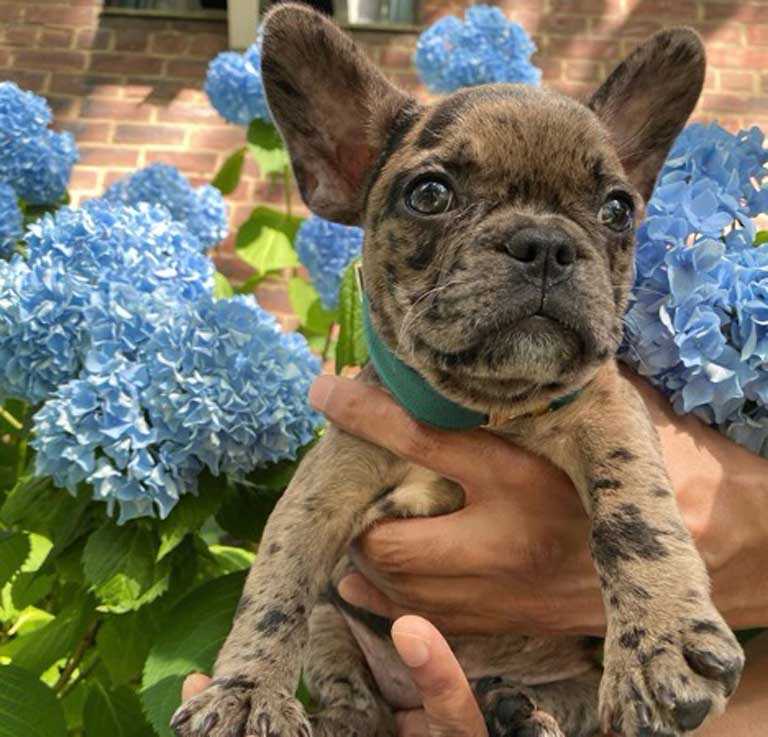
The Merle French Bulldog is a unique and eye-catching variation of the popular French Bulldog breed. While the traditional French Bulldog is known for its solid coat colors, such as fawn, brindle, and pied, the Merle French Bulldog stands out with its distinctive merle pattern.
The origin of the Merle French Bulldog can be traced back to the introduction of the merle gene into the French Bulldog gene pool. The merle gene is responsible for the dilution and mottling of coat colors, resulting in a marbled or speckled appearance. This gene is commonly found in other dog breeds, such as the Australian Shepherd and the Border Collie.
It is believed that the merle gene was introduced to French Bulldogs through crossbreeding with other breeds that carry the merle gene. However, the exact breeds involved in the development of the Merle French Bulldog are not well-documented or widely known.
Popularity and Recognition
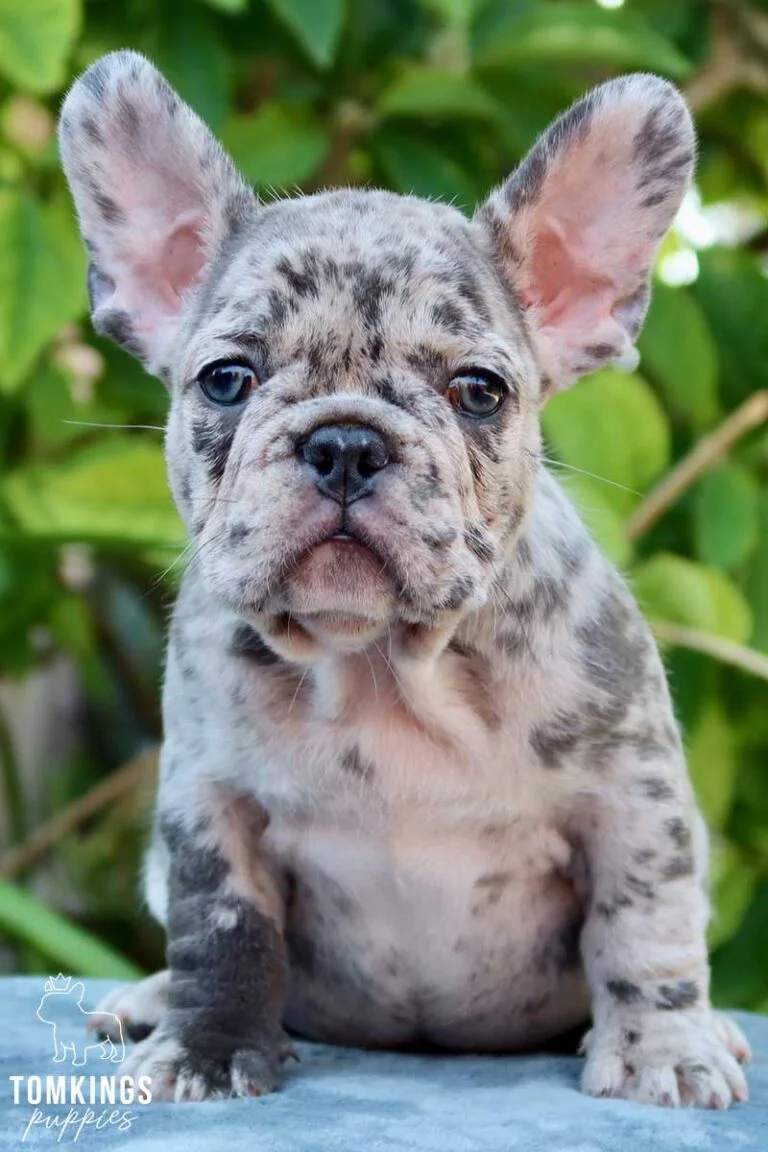
While the Merle French Bulldog has gained popularity among dog enthusiasts, it is important to note that the breed is not officially recognized by major kennel clubs, such as the American Kennel Club (AKC) or the United Kennel Club (UKC). This is due to concerns about the health and welfare of Merle French Bulldogs, as well as the controversy surrounding their breeding.
Some breeders argue that the Merle French Bulldog is a result of natural genetic variation within the breed, while others believe that the merle gene is the result of crossbreeding with other breeds. Regardless of the origin, responsible breeding practices and health testing should always be prioritized to ensure the well-being of the dogs.
Appearance and Temperament
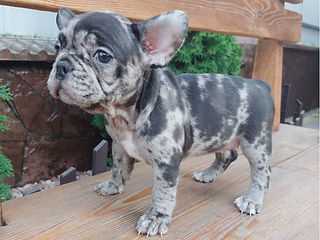
The Merle French Bulldog shares many physical characteristics with the traditional French Bulldog. They have a compact and muscular body, a flat face with a pushed-in nose, and bat-like ears. However, what sets them apart is their unique coat color and pattern.
The merle pattern can vary greatly in intensity and can appear in different colors, such as blue merle, chocolate merle, and lilac merle. The coat is typically mottled or speckled, giving the dog a striking and eye-catching appearance.
In terms of temperament, Merle French Bulldogs are known to be affectionate, playful, and friendly. They are great companions and are well-suited for families and individuals alike. However, it is important to note that individual temperament can vary, and early socialization and training are crucial for a well-rounded dog.
Characteristics and Physical Appearance

Merle French Bulldogs, like their non-merle counterparts, are small and compact dogs with a muscular build. They typically weigh between 16-28 pounds and stand about 11-12 inches tall at the shoulder. Their bodies are well-balanced and sturdy, giving them a strong and athletic appearance.
One of the most striking features of Merle French Bulldogs is their unique coat color pattern. The merle gene creates a marbled or mottled effect on the dog’s coat, with patches of diluted color scattered throughout. This can range from light silver or blue to darker shades of gray or black, depending on the specific variation of the gene.
Their eyes are another distinguishing characteristic of Merle French Bulldogs. They often have striking blue or multicolored eyes, which further adds to their unique and captivating appearance. However, it’s important to note that not all Merle French Bulldogs have blue eyes, as eye color can vary within the breed.
In terms of facial features, Merle French Bulldogs have a distinctive flat and wide skull, with a short and broad muzzle. Their ears are usually bat-like and set high on the head, giving them an alert and expressive look. Additionally, they have a well-defined stop and a strong underbite, which is common in the breed.
When it comes to their overall temperament, Merle French Bulldogs are known for being affectionate, playful, and sociable. They are loyal companions and get along well with children and other pets. However, like all French Bulldogs, they can be prone to separation anxiety if left alone for long periods of time.
Genetics of Merle Coat Color
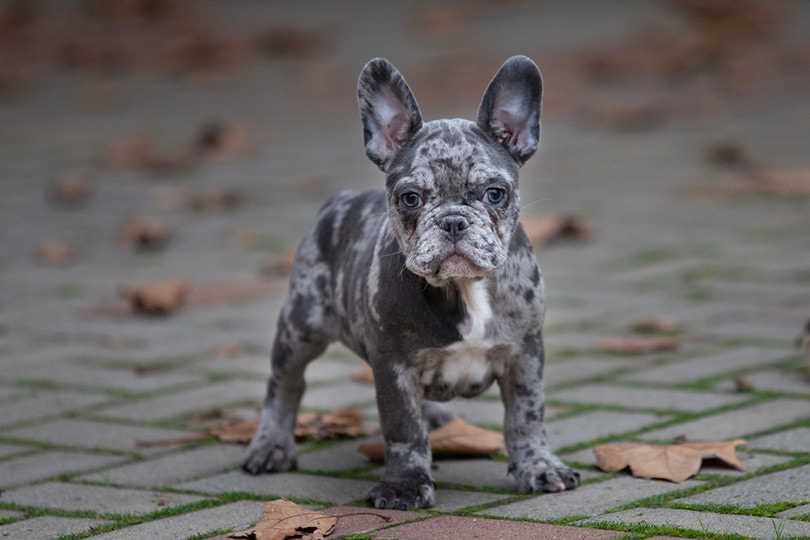
The merle coat color in French Bulldogs is a result of a specific genetic mutation. This mutation affects the distribution and pigmentation of the fur, resulting in a marbled or mottled pattern. The merle gene is dominant, meaning that a dog only needs to inherit one copy of the gene from either parent to display the merle coat color.
It is important to note that the merle gene can also have different effects on other breeds, and the health risks associated with the merle coat color can vary. In some breeds, such as Australian Shepherds and Border Collies, the merle gene is not associated with significant health issues.
Overall, the genetics of the merle coat color in French Bulldogs is a fascinating topic that highlights the complexity of canine genetics. Breeders and owners should be aware of the potential health risks associated with the merle gene and make informed decisions to ensure the well-being of these unique and beautiful dogs.
Controversy Surrounding Merle French Bulldogs
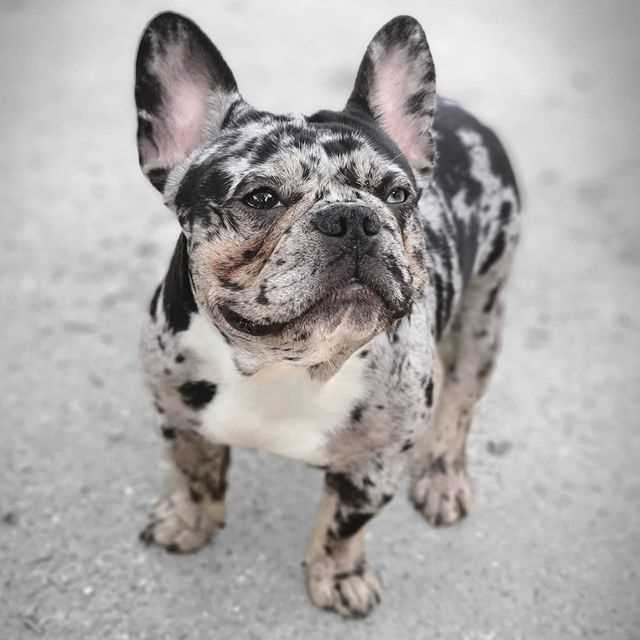
Merle French Bulldogs have become increasingly popular in recent years due to their unique coat color pattern. However, this popularity has also brought about controversy and concern among dog enthusiasts and breeders.
One major concern surrounding Merle French Bulldogs is their health. The merle gene, which is responsible for the distinctive coat color pattern, is also associated with a higher risk of certain health issues. These can include eye abnormalities, hearing loss, and skin problems. Some argue that breeding Merle French Bulldogs can perpetuate these health problems and should therefore be avoided.
Another controversy surrounding Merle French Bulldogs is their breeding practices. Some breeders argue that the merle gene is a natural mutation that occurs in the French Bulldog breed and should be embraced. They believe that responsible breeding practices can help minimize the health risks associated with the merle gene. However, others argue that breeding Merle French Bulldogs is unethical and should be discouraged, as it may lead to the production of puppies with serious health issues.
There is also debate surrounding the recognition of Merle French Bulldogs by breed standards. While some kennel clubs and breed associations recognize Merle French Bulldogs as a legitimate variation of the breed, others do not. This lack of consistency in breed standards has led to further controversy and confusion among dog enthusiasts.
Overall, the controversy surrounding Merle French Bulldogs stems from concerns about their health, breeding practices, and recognition within the dog community. It is important for potential owners and breeders to carefully consider these factors before deciding to work with or own a Merle French Bulldog.
Health Issues Associated with Merle French Bulldogs
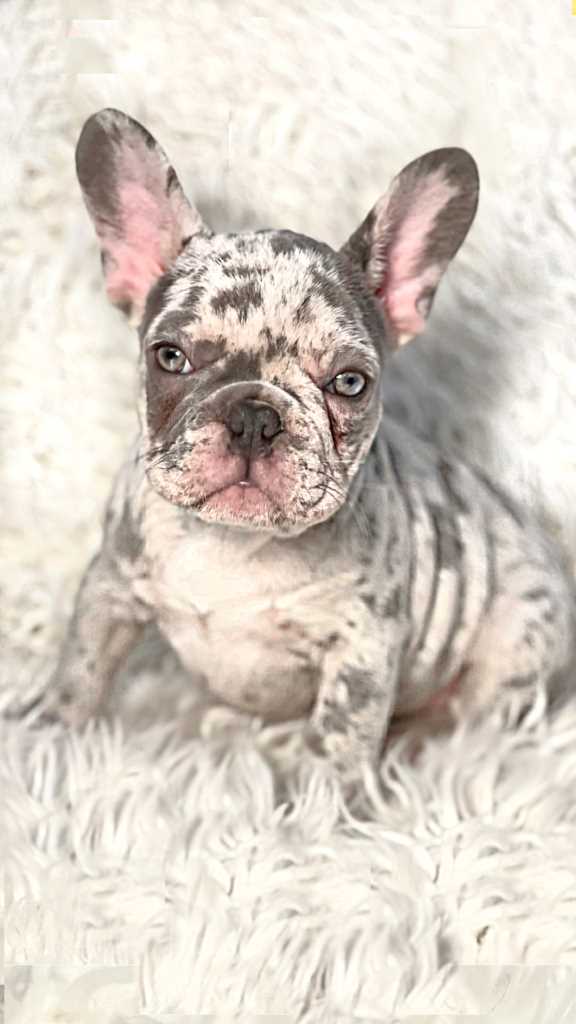
Merle French Bulldogs, like other merle-colored dogs, are prone to certain health issues related to their coat color genetics. The merle gene, which causes the unique and attractive coat pattern, can also lead to various health problems.
One of the most common health issues in merle French Bulldogs is hearing and vision problems. The merle gene can affect the development of the inner ear and the optic nerve, resulting in partial or complete deafness and vision impairment. It is important for owners of merle French Bulldogs to be aware of these potential issues and take necessary precautions to ensure the well-being of their pets.
In addition to hearing and vision problems, merle French Bulldogs may also be prone to skin and coat issues. The merle gene can affect the pigmentation of the skin, leading to skin allergies, sensitivity to sunlight, and increased risk of sunburn. These dogs may require special care and protection to prevent skin problems and discomfort.
Furthermore, merle French Bulldogs may be more susceptible to certain genetic disorders and diseases. The merle gene is often associated with a higher risk of congenital deafness, eye abnormalities, and other genetic conditions. It is crucial for breeders to conduct thorough health testing and screening to minimize the risk of passing on these health issues to future generations.
It is important for potential owners of merle French Bulldogs to understand the potential health risks associated with this coat color. Regular veterinary check-ups, proper care, and genetic testing can help mitigate these risks and ensure the overall health and well-being of these unique and beautiful dogs.
| Common Health Issues: | Precautions: |
|---|---|
| Hearing and vision problems | Regular check-ups with a veterinary ophthalmologist and audiologist |
| Skin allergies and sensitivity | Special care and protection from sunlight |
| Genetic disorders and diseases | Thorough health testing and screening by responsible breeders |
Are Merle French Bulldogs Recognized by Breed Standards?
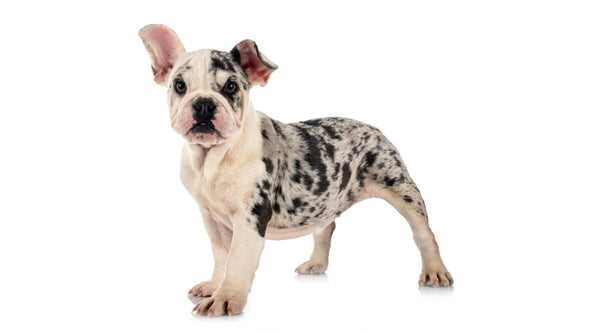
The merle coat color pattern, characterized by patches of diluted pigment, is not considered a desirable trait in French Bulldogs because it is associated with potential health issues. The merle gene, which is responsible for the coat color pattern, can also be linked to various eye abnormalities and deafness.
Recognized breed standards aim to maintain the integrity and health of a breed, and merle French Bulldogs do not meet these criteria. Breeders who intentionally produce merle French Bulldogs are often criticized for prioritizing aesthetics over the well-being of the dogs.
While merle French Bulldogs may not be recognized by breed standards, they still have a devoted following and are popular among certain individuals who appreciate their unique appearance. However, it is important for potential owners to be aware of the potential health risks associated with the merle coat color pattern and to choose a reputable breeder who prioritizes the health and well-being of their dogs.

Tyler Newsom, a canine enthusiast, is passionate about bulldogs and their coat care. With years of experience and dedication, he shares his expertise to help bulldog owners maintain their beloved pets’ fur health and vitality through practical tips and advice.
